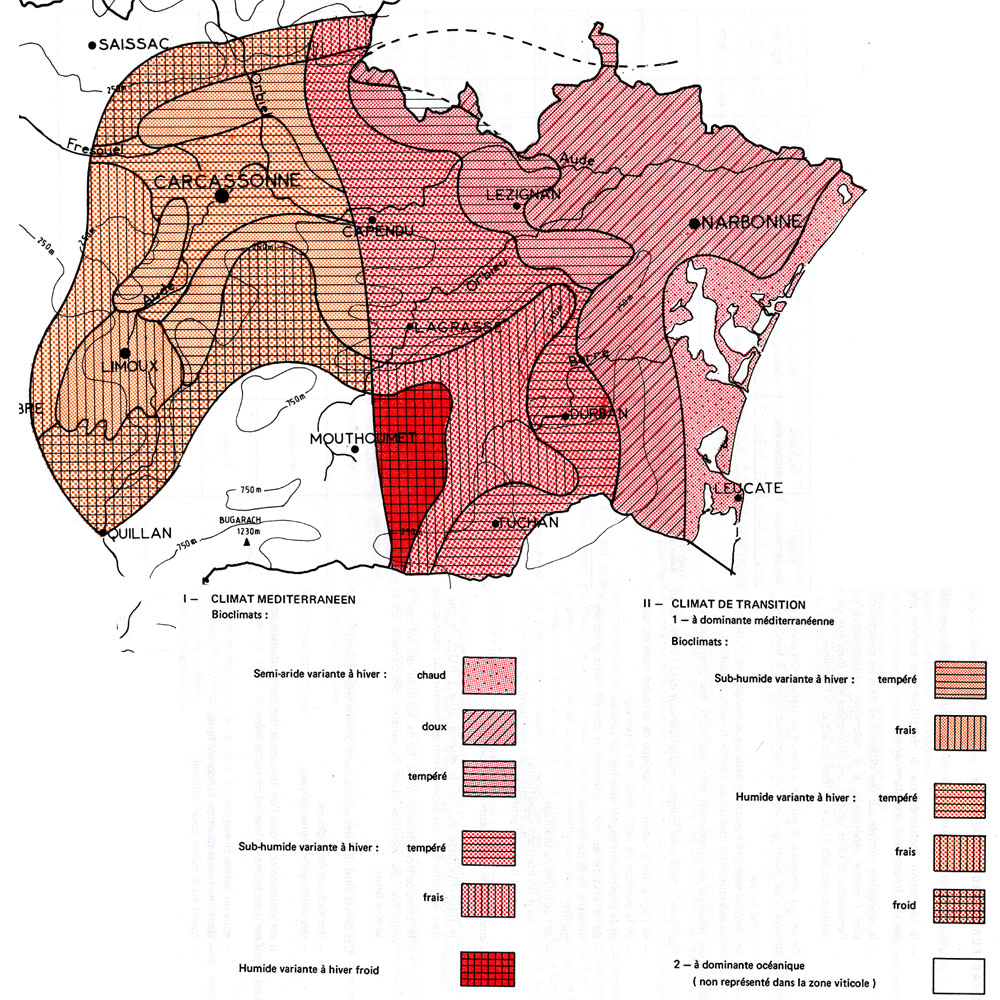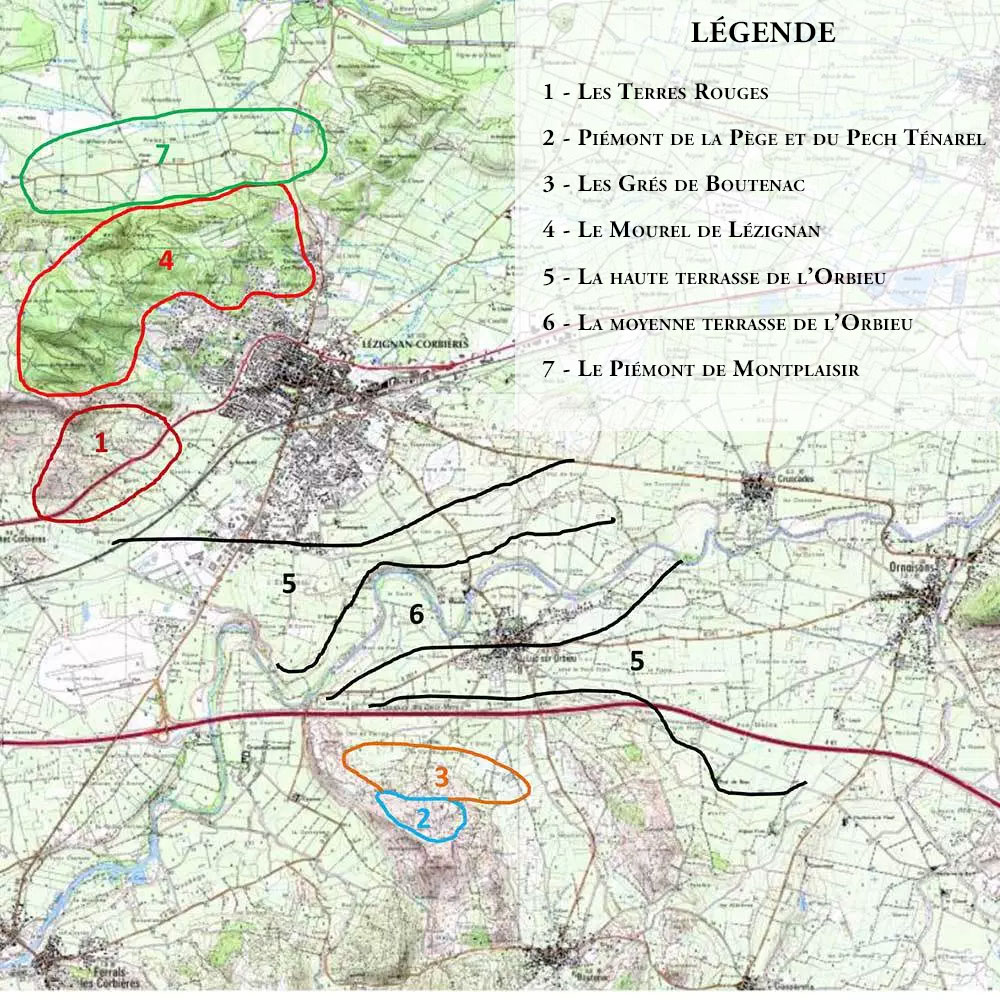CHÂTEAU GRAND MOULIN
CHÂTEAU
GRAND
MOULIN
GRANDS VINS DES CORBIÈRES



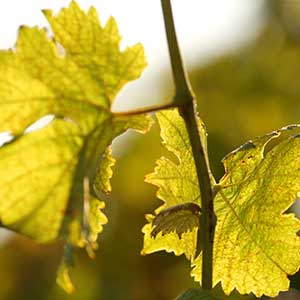

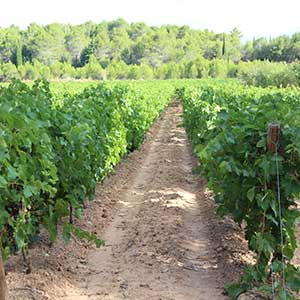
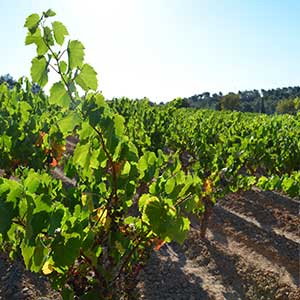
130 hectares (321 acres) of vineyards located around Lézignan-Corbières, 30 km west of the Mediterranean, in the AOP Corbières (Protected Appelation of Origin Corbières).
250 parcels located on a radius of 10 km
7 distinct terroirs
5 red grape vareties : Syrah, Grenache Noir, Carignan, Mourvèdre, Cinsault.
6 white grape vareties : Vermentino, Grenache Blanc, Roussanne, Muscat, Muscat of Alexandria, Bourboulenc.



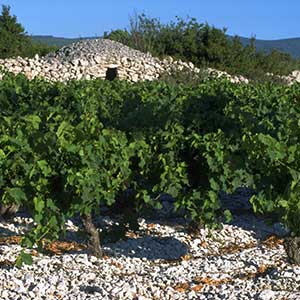
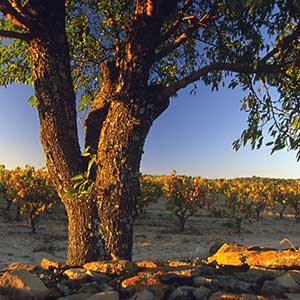
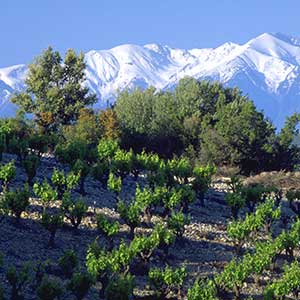
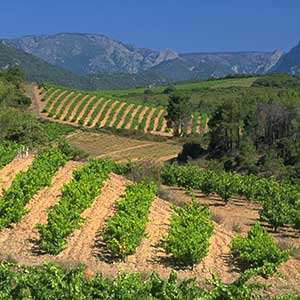
The Massif des Corbières is a buttress of the Pyrenees, located between Carcassonne and the Mediterranean. The eponymous AOP Appellation d’Origine Protégée covers some sixty square kilometers and is based on a geological puzzle shaped by the Pyrenean erosion.
No other appellation in France contains such a great variety of soils; associated with the various climatic nuances this leads to an extraordinary palette of white, red and rosé wines.



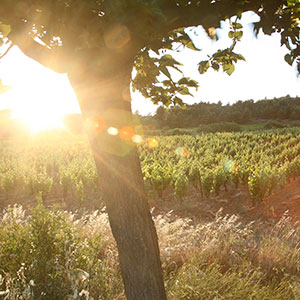
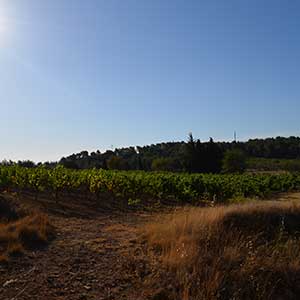
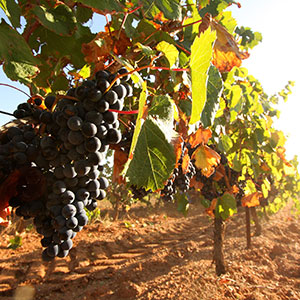
The vineyard of Château Grand Moulin evolves under a warm and dry Mediterranean climate. The distance to the sea causes a less pronounced summer drought and limits the disturbance and stress that a lack of water can cause to acheive good maturity of the grapes.
The vineyard is located in the Lézignanais area – an extremely windy corridor between the Black Mountains to the north and the Corbières peaks to the south. Here the wind blows more than 300 days a year. The dominant west wind (locally called Cers) dries the morning dew and promotes a healthy microclimate in the grapes. It thus makes it possible to greatly limit phytosanitary treatments ; reasoned conduct takes on its full meaning here.



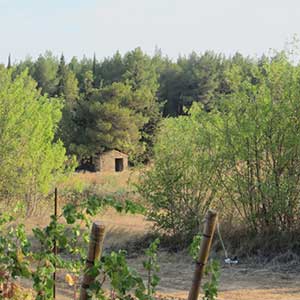
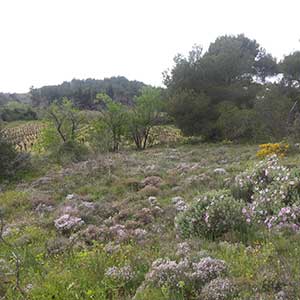
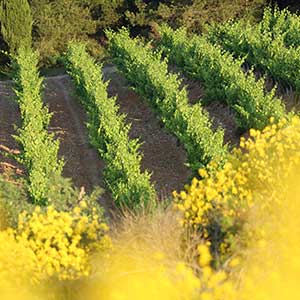
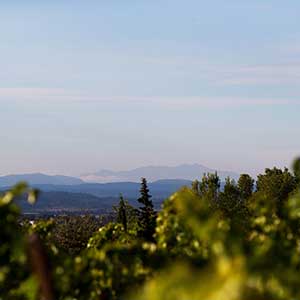
There is a hilly pattern northwards at Conilhac and Lézignan ; and also to the south on the border of Luc and Boutenac. In the center is a pattern very specific to the Lézignanais : the flat and gravelly terraces of the Orbieu.
We are in the Mediterranean region of the vine; the green oak, the pine tree and the olive tree. In the hottest situations (southern or southeast exposure and thin soils), one finds Kermès oak, pistachio, thyme, rosemary, lavender, scorpion broom and so on. In less warm situations (north or northwest exposure and with deeper soils) we find the pubescent oak, the common juniper, the broom of Spain, the coronille etc.


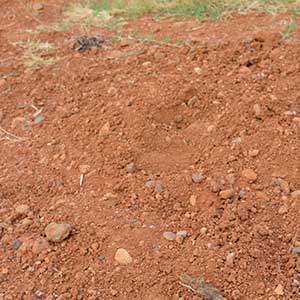
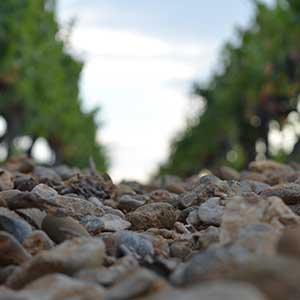
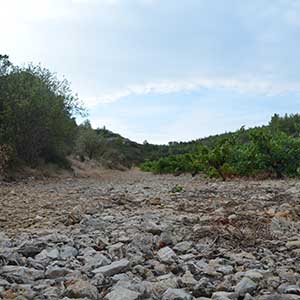
Like all of the Corbières, Chateau Grand Moulin is set on a real puzzle of soils with various characteristics.
Over the entire vineyard of Château Grand Moulin seven terroirs have been identified.
These terroirs have for each of them pedological, geological and topographical characteristics that will bring quality and typicity to their wines.



The Terres Rouges
Situated to the north-west, facing south and into the full wind, the hills of the Terres Rouges has a rare and well-individualized soil. Its clay-sandy material is rich in iron oxides which gives the red colour to the topsoil. The strong stoniness of the soil has three advantages : decreased fertility, better water infiltration and decreased evapotranspiration.
In the middle and bottom of the slope is the area planted with Syrah, which is a wonderful expression of the Corbières.
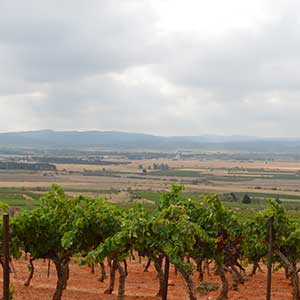
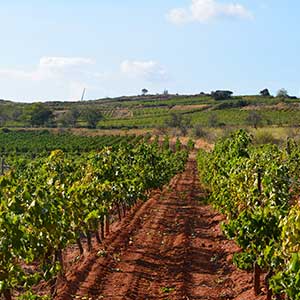
Molasse from the end of the tertiary geologic era, sandy conglomerates sedimentary rock and sometimes calcareous beds. – South exposure
The Terres Rouges
Situated to the north-west, facing south and into the full wind, the hills of the Terres Rouges has a rare and well-individualized soil. Its clay-sandy material is rich in iron oxides which gives the red colour to the topsoil. The strong stoniness of the soil has three advantages : decreased fertility, better water infiltration and decreased evapotranspiration.
In the middle and bottom of the slope is the area planted with Syrah, which is a wonderful expression of the Corbières.
The Grés de Boutenac
Located south and on thin soils with limestone, the Boutenac sandstones constitute a terroir with high qualitative potential, classified in the appellation “Cru Boutenac”. The area is hilly and as this terroir is mostly located at the top of the slope the Carignan is at its maximum expression. In a middling situation, the Mourvèdre finds its place.
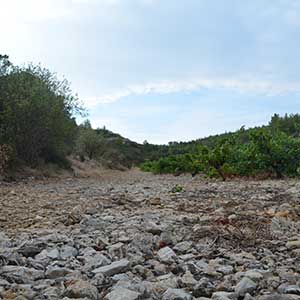

Limestone to Rudist of the secondary era – Northwest exposure
The Grès de Boutenac
Located south and on thin soils with limestone, the Boutenac sandstones constitute a terroir with high qualitative potential, classified in the appellation “Cru Boutenac”. The area is hilly and as this terroir is mostly located at the top of the slope the Carignan is at its maximum expression. In a middling situation, the Mourvèdre finds its place.
The Piedmont of the Pège and the Pech Ténarel
Also classified as Cru Boutenac, this terroir is located at mid-slope with moderately deep soils, resulting from a mixture of aeolian sands and permeable yellow silt.
The average fertility of this medium allows the implantation of several grape varieties; Carignan, Grenache and Syrah.
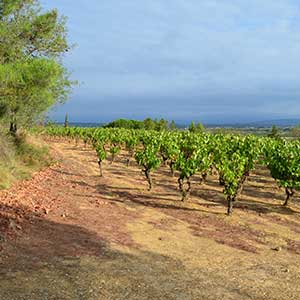
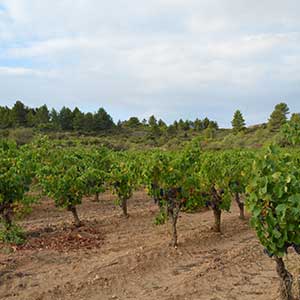
Aeolian sand and yellow silt from the tertiary era – Northern exposure
The Piedmont of the Pège and the Pech Ténarel
Also classified as Cru Boutenac, this terroir is located at mid-slope with moderately deep soils, resulting from a mixture of aeolian sands and permeable yellow silt.
The average fertility of this medium allows the implantation of several grape varieties; Carignan, Grenache and Syrah.
The Mourel of Lézignan
This terroir located to the north of the domain extends on a hill with very different slopes and exposure.
At the top of the slope, there are thin soils composed of conglomerate or sandstone which go deeper down the slopes, benefiting from the elements descended by gravity: water, silts, clays, sand and gravel.
In this terroir it is the depth of the soil and the exposure that will determine the choice of the grape variety
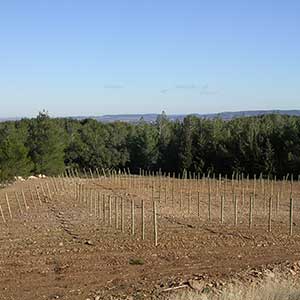
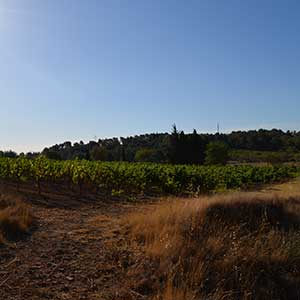
Molasse of Carcassonne of the Eocene (end of the Tertiary Era) from the Pyrenean erosion, with alternating lenses of conglomerate, sandstone, and marl. – South exposure
The Hill of St-Anne
This terroir located to the north of the domain extends on a hill with very different slopes and exposure.
At the top of the slope, there are thin soils composed of conglomerate or sandstone which go deeper down the slopes, benefiting from the elements descended by gravity: water, silts, clays, sand and gravel.
In this terroir it is the depth of the soil and the exposure that will determine the choice of the grape variety.
The High Terrace of the Orbieu
The horizontal and gravelly terraces of the Orbieu, which have been planted above the current course of the river, are deposits of material left behind by the large floods during the ice-melts during the great glaciations.
At 35 metres above the level of the Orbieu, the high terrace consists essentially of pebbles and is 70 centimeters deep, with a very compact horizon that opposes any penetration (water, roots or plow). These soils suffer from summer drought and it is with great discernment that one must choose grape varieties and rootstocks.

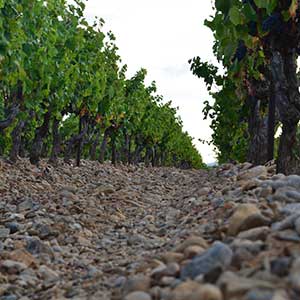
Alluvium of the Quaternary Age.
The High Terrace of the Orbieu
The horizontal and gravelly terraces of the Orbieu, which have been planted above the current course of the river, are deposits of material left behind by the large floods during the ice-melts during the great glaciations.
At 35 metres above the level of the Orbieu, the high terrace consists essentially of pebbles and is 70 centimeters deep, with a very compact horizon that opposes any penetration (water, roots or plow). These soils suffer from summer drought and it is with great discernment that one must choose grape varieties and rootstocks.
The Middle Terrace of the Orbieu
At 20 meters above the level of the Orbieu the middle terrace has a lesser and more irregular stoniness: the pebble sheets can leave room for clay or silt.
The other difference is on the water level: no concretion, but it is mainly the water inputs from the terrace above that will allow another cultural way.
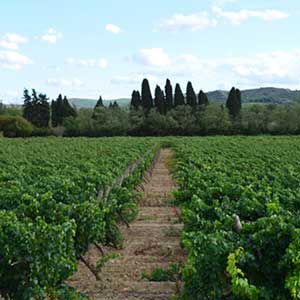
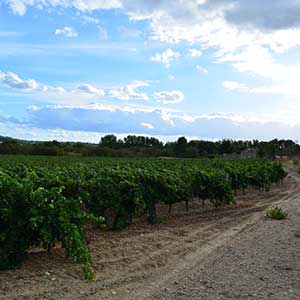
Alluvium of the Quaternary Age.
The Middle Terrace of the Orbieu
At 20 meters above the level of the Orbieu the middle terrace has a lesser and more irregular stoniness: the pebble sheets can leave room for clay or silt.
The other difference is on the water level: no concretion, but it is mainly the water inputs from the terrace above that will allow another cultural way.
The Piedmont of Montplaisir
Situated on the northernmost part of the estate, this terroir at the bottom slope of the hill is essentially made up of colluvions coming from the soil of the mourel located just above.
All the textures can be present but one common point dominates: it’s depth. The vine can plunge its roots as it wishes.
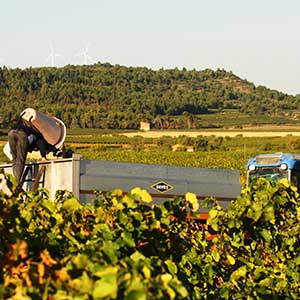
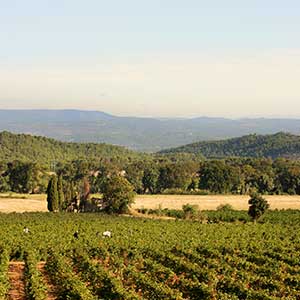
Colluvions – Northern Exposure, Northeast
The Piedmont of Montplaisir
Situated on the northernmost part of the estate, this terroir at the bottom slope of the hill is essentially made up of colluvions coming from the soil of the mourel located just above.
All the textures can be present but one common point dominates: it’s depth. The vine can plunge its roots as it wishes.
Jean-Noël and Frédéric Bousquet are proud to share their countryside values and their vineyard philosophy
Jean-Noël Bousquet bought his first hectare when he was 17 years old. Five years later, in 1978, he settled as a young winegrower with 8 hectares. At this time, he was selling his grapes to the local cooperative.
At Chateau Grand Moulin meet a team of passionate staff who are committed to the Bousquet father & son. Together and on a daily basis they « cultivate » the quality of Château Grand Moulin.
Jean-Noël and Frédéric Bousquet are proud to share their countryside values and their vineyard philosophy
Jean-Noël Bousquet bought his first hectare when he was 17 years old. Five years later, in 1978, he settled as a young winegrower with 8 hectares. At this time, he was selling his grapes to the local cooperative.
At Chateau Grand Moulin meet a team of passionate staff who are committed to the Bousquet father & son. Together and on a daily basis they « cultivate » the quality of Château Grand Moulin.
